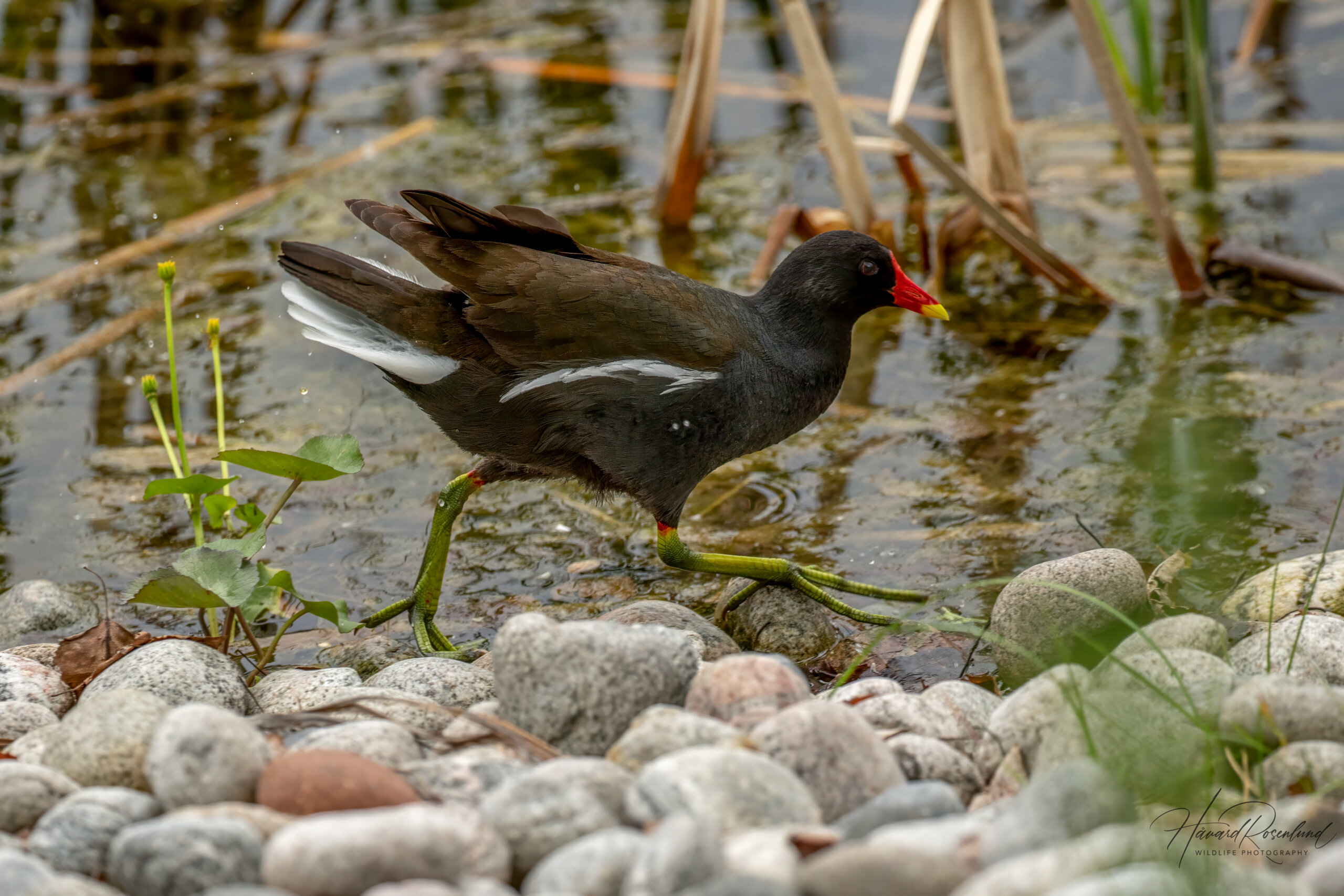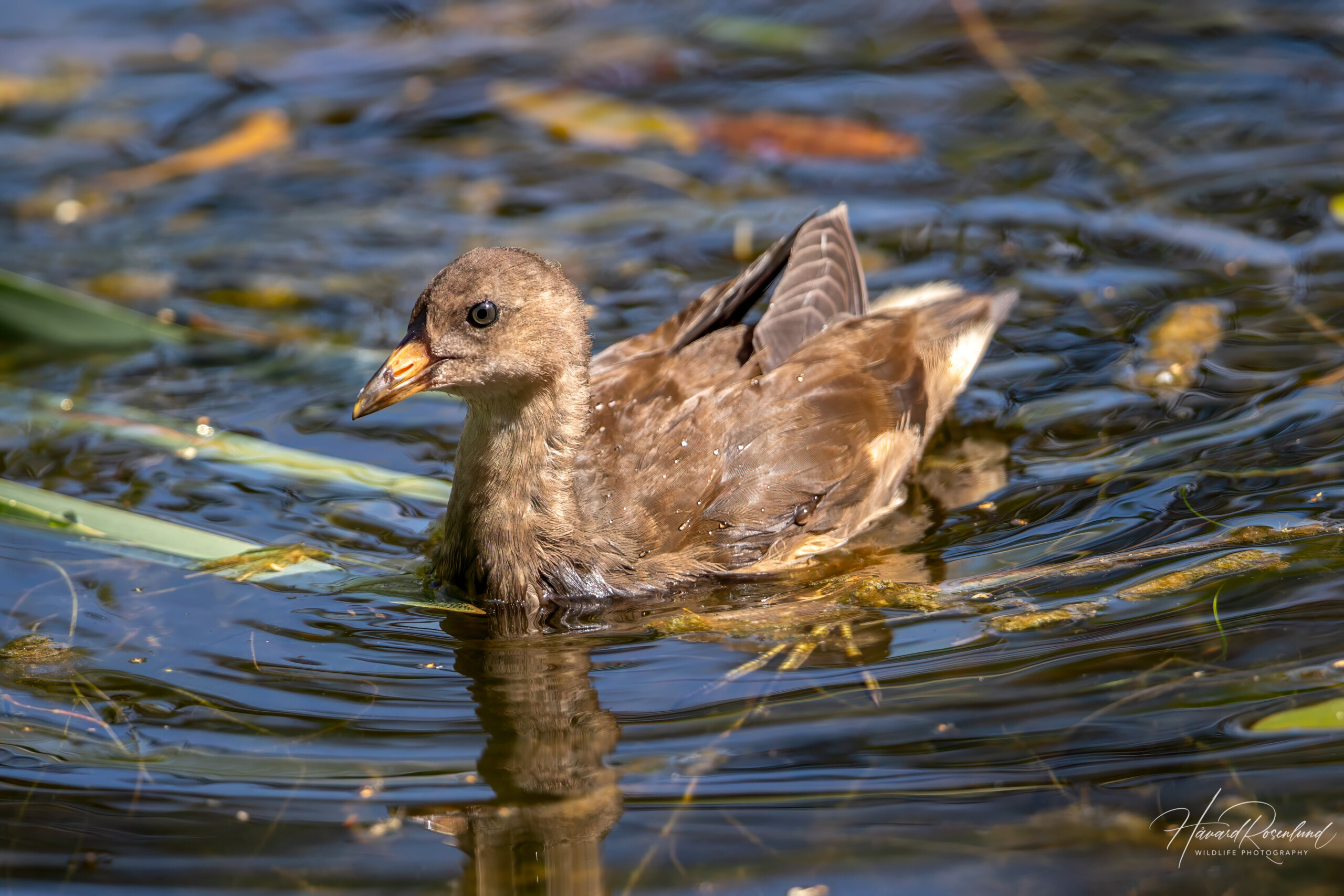Description
The common moorhen (Gallinula chloropus) is a widespread species of rail in the Old World. It is found in much of temperate Europe, Africa, and Asia. The populations in colder regions are often migratory. This is a species that is easy to recognize, with its dark plumage, yellow legs and conspicuous red and yellow bill. It was previously considered conspecific with the common gallinule (Gallinula galeata), a closely related and very similar American species. The common moorhen grows to lengths of 30-38 cm (12-15 in).
Diet & habitat
The common moorhen is dependent on water, and is only found in water-rich habitats, including both freshwater and marine environments. It is often quite shy and hides among reeds, but can be very tame in areas with lots of human activity, such as parks. It feeds on plants and small invertebrates in and near water. It can be seen looking for food walking on floating vegetation, such as water lilies.
Nesting
The common moorhen exhibits an unusual mating behaviour, where females compete with each other over males. A breeding pair builds a basket-like nest on the ground in thick vegetation. Around 8 eggs are laid sometime between mid-March and mid-May (year-round in tropical regions). Later in the season the clutch will be smaller, sometimes down to 5 eggs. Incubation takes about 21 days, and both parents take part in the incubation and the feeding of young. Chicks leave the nest after 40-50 days and are independent a few weeks later.
Status
The common moorhen has a very wide distribution and, despite a decline in suitable habitats, is still very common most places. It is not threatened and is listed as least concern on the IUCN Red List.










